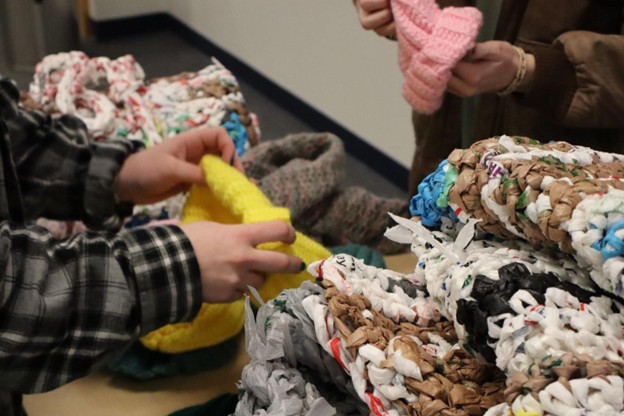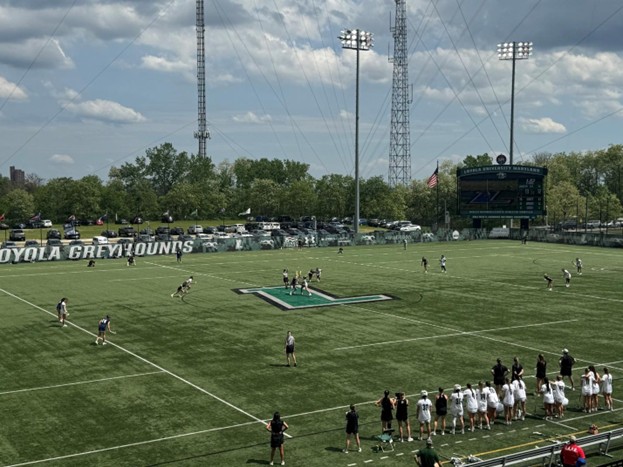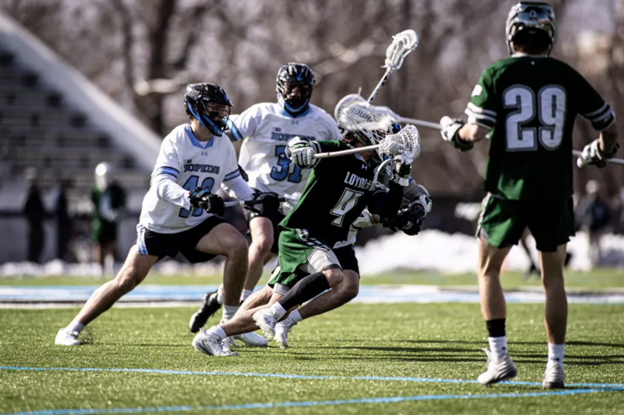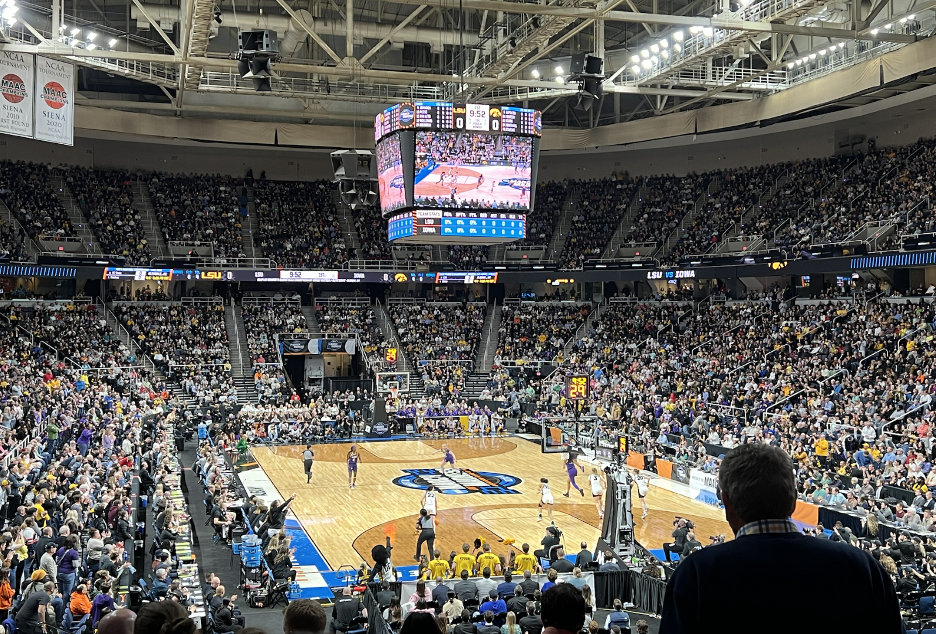Cheers broke out along the shore of Baltimore’s Inner Harbor as Katie Pumphrey’s outstretched hand marked the finale of her 14-hour swim. On June 25, 2024, the 36-year-old Maryland resident Katie Pumphrey became the first to map out and swim the 24-mile stretch from the Chesapeake Bay Bridge to Baltimore’s Inner Harbor.
“I’ve been thinking a lot about swimming in Baltimore for the 20 years I’ve lived here. The more and more I walked by the water, the more I thought about how cool it would be to finish a swim in the city,” Pumphrey said.
While her swim may prove to be an athletic feat, Pumphrey explained how swimming transcends simple physical exercise. Her goal for this milestone was clear: advocate for a safe, swimmable harbor where the Baltimore community can gather and thrive. After four decades, Baltimore’s Inner Harbor was deemed swimmable by the Waterfront Partnership of Baltimore, a nonprofit organization that partnered with Pumphrey to aid in her swim.
The partnership with Waterfront was vital, as it promoted the improvement of water quality and the increase in recreational opportunities within the water. In just under 14 hours, Pumphrey began her swim at 3:19 a.m. and swam until roughly 5:13 p.m., persevering through the warm waters of June with the sun beating down on her swimming cap-clad head.
“That was the hardest thing I’ve ever done. I want to do it again,” Pumphrey said.
Pumphrey originally scheduled to complete the swim in mid-May when the water would be cooler and the tide would be predictable. Typically, she trains in cold waters due to safer open water conditions. However, Pumphrey had to make adjustments when the Francis Scott Key Bridge collapsed. In response to the tragedy, she communicated with US Coast Guard Sector Maryland and timed the swim later to allot more time for the clean-up efforts in order to safely attempt the swim.
During her presentation at Loyola, Pumphrey explained the difficulties and obstacles she had to work around throughout her swim. Physically, training and practicing for the big day would be hard. Mentally, it was a whole other beast she needed to tackle.
Throughout the swim, Pumphrey was accompanied by a dedicated team of family, friends, and fellow swimmers in boats, providing her with hydration, feeds, and supportive comments in intervals. The biggest rule in the sport is that one cannot stop and hold onto anything until the race is over. Swimmers are typically allowed to take feeds at designated points or intervals during a long-distance swim, but they must tread water to do so. Pumphrey explained that it was during these times when her team would cheer her on and motivate her throughout the day.
Along with using her support system as inspiration and motivation, Pumphrey intertwines her athleticism with her passion for art, proudly identifying herself as an artist. Outside of training and coaching swim, Pumphrey spends her time working as a visual artist. She uses the idea of water as an influence and inspiration for her work and focuses on large-scale paintings and sculptures. Her online portfolio showcases how exactly she combines the elements of swimming, water, and the anxieties that follow suit.
“It was inspiring to hear about her accomplishments and how she maintains such a healthy balance. She’s not just a professional athlete and an artist, but also a human.” Danica Taylor ‘27 said. Regarding Pumphrey’s visit to a Multimedia Storytelling class at Loyola.
At the finale of her extensive swim, Pumphrey was greeted by hundreds of people at Inner Harbor’s Harborplace Amphitheater. The local fire department shot water cannons to signify the end of her race and her historical accomplishment. Pumphrey intends to continue swimming the route she has mapped out annually, hoping to include other swimmers to join her in the future.
“It was magical to see that many people were lit up by this weird sport. My hope is to continue spreading this message: there is more progress to do,” Pumphrey said.







































































































